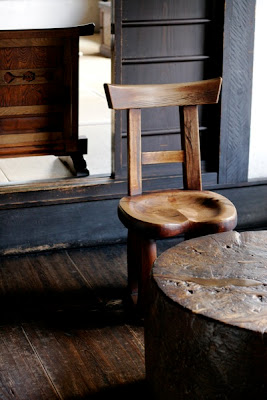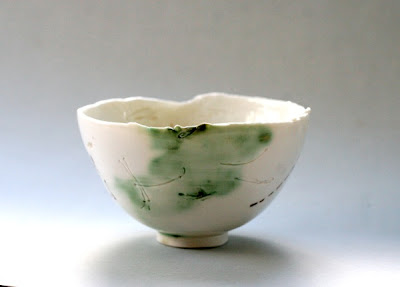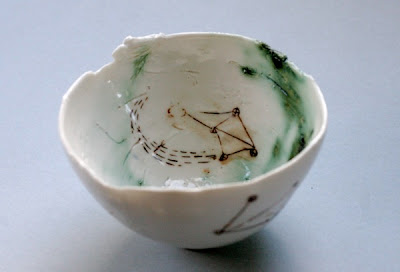
CONCLUSION
I am really excited about the final work from this semester. The final pieces are a good platform to launch me onto further work. The way the vessels work with the other elements including the unfired work opens possibilities to continue with using these formal elements of composition to create work using thrown pots. I intend to bring more of the bush combings into the installations and explore the possibilities for displaying vessels in the natural environment. I also intend on exploring paper-making to create yet another element using bush-combings within an installation. The Japanese concept of placing shrines and stone lanterns in gardens as an accent to the environment is very intriguing to me in the context of the thrown vessels and the Australian bush. Diaries and maps continue to capture my interest as a way of talking about place and time. Next semester I intend to draw out this aspect of the research and continue creating ephemeral works with permanent elements both within a gallery, context and outside in the environment. The photography will also be an area for continued exploration and skill development. I feel that the photos could become a more integral part of the work rather than function as a supplementary resource
In reflection the initial Study Plan was more an overview of the complete body of work I’d like to make during the entire degree than a breakdown of investigation for one semester. I learned to set more specific goals for both the working process and the reading I’d like to accomplish throughout the semester. This was a very challenging semester for me. Working alone in the studio and trying to earn a living through the arts has involved formulating a way of developing new work that is very personal and (now I see!) somewhat secretive. Revealing my working process had been unexpectedly painful and nerve-wracking, a bit like a magician showing the audience where the doves are hidden. I’ve tried to make the final unpacking and actually seeing the work in the flesh as beguiling a process as possible. There is a place in every presentation for something beautiful to appear as if by magic.













































